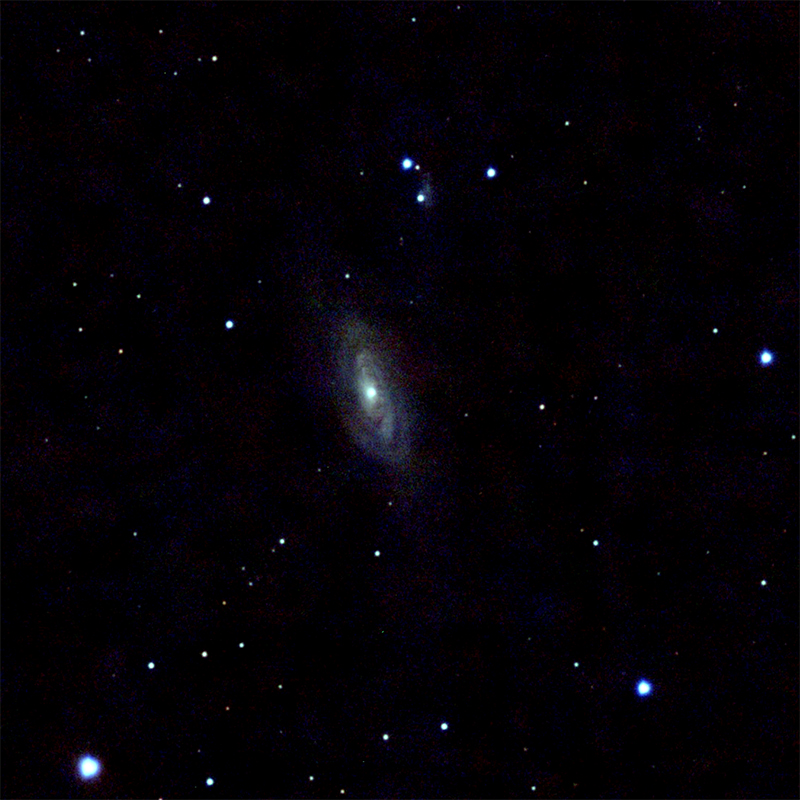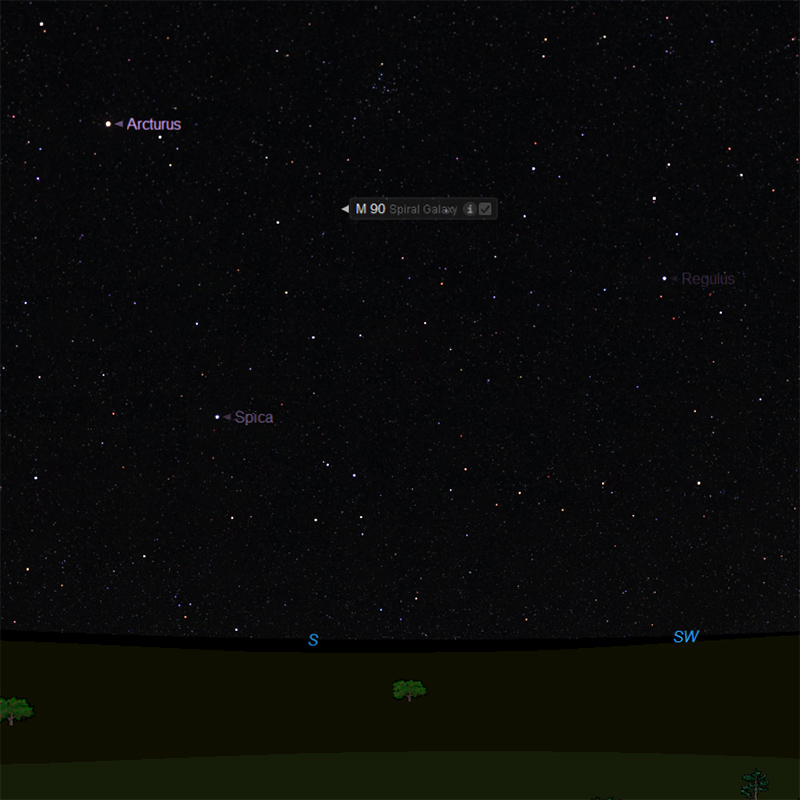M90

Credits: Keith Turnecliff, Nerja, Spain
Messier 90 (also known as M90 and NGC 4569) is an intermediate spiral galaxy exhibiting a weak inner ring structure about 60 million light-years away in the constellation Virgo.
It was discovered by Charles Messier in 1781.
The spectrum of Messier 90 is blueshifted, which indicates that it is moving towards the Earth. In contrast, the spectra of most other galaxies are redshifted.
The blueshift was originally used to argue that Messier 90 was actually an object in the foreground of the Virgo Cluster.
However, since the phenomenon was limited mostly to galaxies in the same part of the sky as the Virgo Cluster, it appeared that this inference based on the blueshift was incorrect.
Instead, the blueshift is thought to be evidence for the large range in velocities of objects within the Virgo Cluster itself.
M90 is a bright, beautiful spiral galaxy situated in the Virgo cluster of galaxies.
Located in the constellation Virgo, this galaxy is approximately 59 million light-years away from Earth and has a magnitude of 9.5.
M90 is believed to be breaking away from the rest of the galaxies in the Virgo cluster and is one of the few galaxies traveling toward our Milky Way galaxy, not away.
Charles Messier found M90 in 1781 while looking at other galaxies in the Virgo cluster. M90 contains approximately a trillion stars and a thousand globular clusters.
With the exception of the inner disk region, the galaxy’s arms contain very little star formation.
Interactions with neighboring galaxies likely stripped away the gas and material that M90 needs to have active star formation in its outer regions.
In the future, M90 is expected to evolve into a lenticular galaxy, which is a galaxy that has qualities of both a spiral and an elliptical galaxy.
This image of M90’s core was constructed using Hubble observations in visible and infrared light.
Facts about M90 by Keith Turnecliff
The best time to view M90 is in May. It can be seen with binoculars in a clear, dark sky, and telescopes (especially larger ones) will begin to reveal more details of the galaxy, such as its arms and bright core.

Best viewed with resolution 1920 x 1080.
Credits: Image courtesy of Starry Night Pro Plus 8, researched and implemented by Keith Turnecliff.